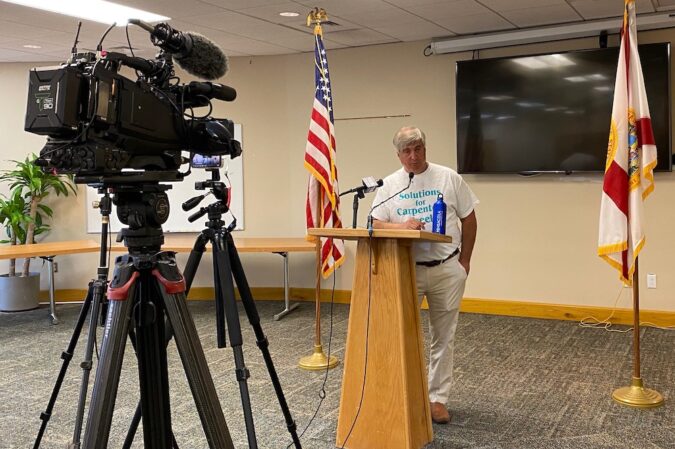
By Jeremy Morrison
Pensacola’s decade-running municipal experiment with the strong-mayor form of government has been a success, asserted Mayor Grover Robinson during his regular weekly press conference Monday.
“At no time have people wanted to be more a part of Pensacola,” Mayor Robinson said, attaching the city’s executive-leaning governmental style to Pensacola’s general uptick in “vibrancy.”
The Pensacola City Council is reviewing and formalizing potential revisions to the city’s charter, per a recently assembled Charter Review Commission. The charter is assessed in such a way every 10 years, with the city switching from a council-manager to the so-called strong mayor form of government during the previous review.
With the city council close to wrapping its discussions on this issue, the city’s strong-mayor form seems safely secure. Perhaps for good measure, Mayor Robinson stressed how important he considered the matter Monday.
“I think Pensacola had probably seen a decline for 40 years, and then the last 10 years we’ve begun to see people say this is where they want to be,” Robinson said, explaining that he believed the executive approach better abled such progress in the city.
Robinson also noted that — with the phase-out of at-large city council seats in recent years — the mayor represents an official selected by all the city’s voters.
“The mayor is the only one who looks at it from a community-wide standpoint, who is elected community-wide and has that broad perspective to deal with that,” he said.
Looking the Other Way on Signs
As local political candidates look toward the fall elections, residents have increasingly looked at their campaign signs proliferating around the area. Within the city, a bit of a disagreement has arisen concerning their placement.
On Monday, Mayor Robinson addressed this issue. He said, “Certainly, there is a sign ordinance, but within that sign ordinance, we have discretion.”
In the room for the mayor’s press conference was Margaret Hostetter, who raised issues about the sign placement. She was armed with a printed stack of emails for members of the press in which she charged the mayor with being “abusive” in a “bullying” email in which he labeled Hostetter as “subversive.”
“I object to being abused, bullied and having my 1st Amendment rights trampled by an elected official that calls me a subversive because I question non-enforcements of a city ordinance, ” Hostetter wrote in the email.
In her complaints, Hostetter cited signs placed in the right of way. Robinson addressed this issue, saying that “most residential properties don’t understand what the right of way is,” and the city didn’t typically that rule.
“Case in point, I talked at length to mayoral candidate Jewel Cannada Wynn, who reminded me that she mows the right of way and she doesn’t understand why you can’t use it for signs. We tend to agree,” the mayor said.
Robinson also said he considered Hostetter’s complaints to be politically motivated.
“Mrs. Hostetter and certain other council members are only pushing forward in certain places that they actually have somebody they know is running and are targeting those individuals,” the mayor said, seeming to nod towards Councilwoman Sherri Myers, who is also running for mayor.
Pitching Estuary Program
Once tethered to Escambia County, the Pensacola & Perdido Bay Estuary Program is going independent, becoming a pure non-profit. Mayor Robinson said Monday that he would soon accompany Matt Posner, the organization’s director, to Washington D.C. to secure needed funding for the group’s efforts to improve conditions around the local watershed.
“We’re planning to meet with EPA there; we’re planning to meet with both congressional representatives from Florida and Alabama because that estuary program does go into two states,” Robinson said.
The mayor also spoke about how local governments around the region contributed to support the estuary program — “everybody’s putting something into it, and helping that program go” — and that the city would be upping its contribution.
“We’d been $5,000; we’ve gone up to $35,000,” the mayor said, explaining that the program requires about $200,000 a year in operating costs.



